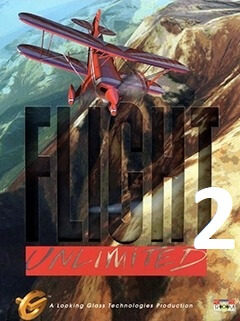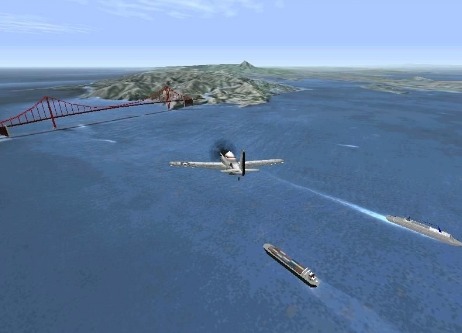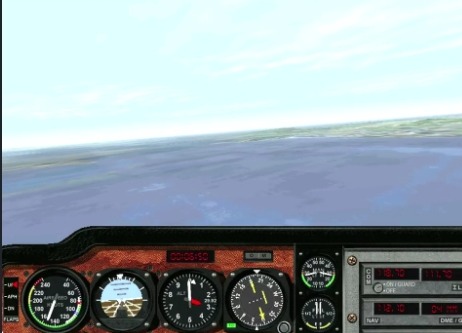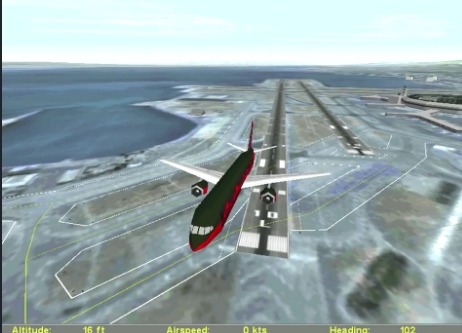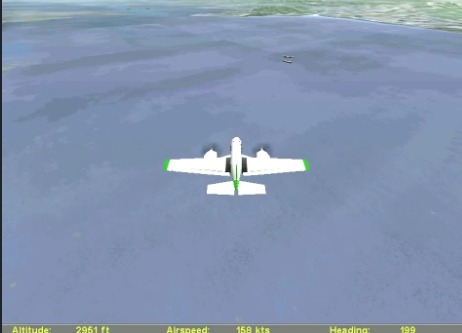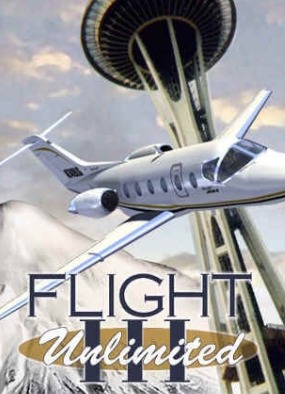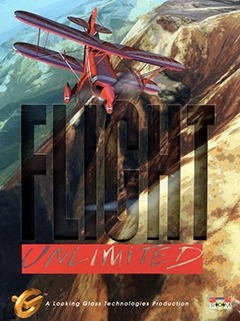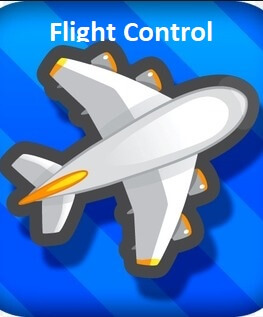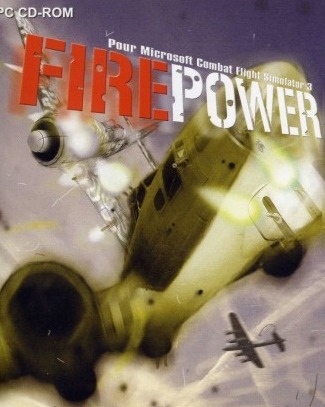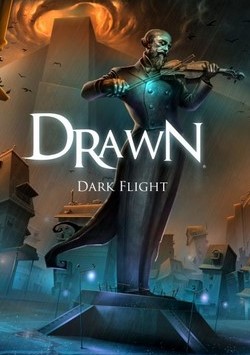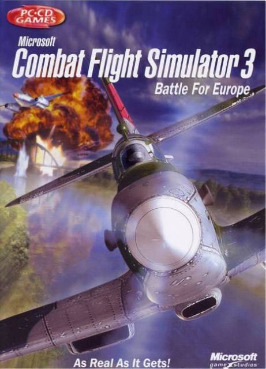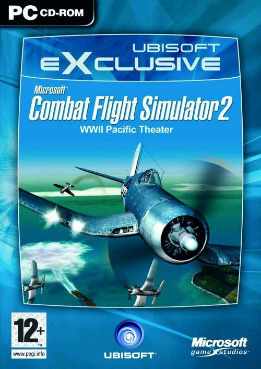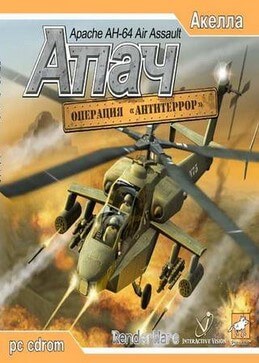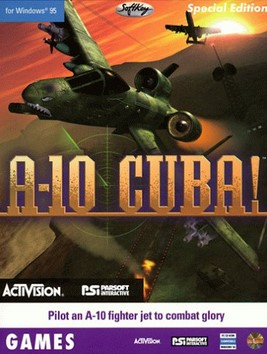Flight Unlimited II is a 1997 flight simulator video game developed by Looking Glass Studios and published by Eidos Interactive. The player controls one of five planes in the airspace of the San Francisco Bay Area, which is shared with up to 600 artificially intelligent aircraft directed by real-time air traffic control. The game eschews the aerobatics focus of its predecessor, Flight Unlimited, in favor of general civilian aviation. As such, new physics code and an engine were developed, the former because the programmer of Flight Unlimited's computational fluid dynamics system, Seamus Blackley, had left the company.
The team sought to create an immersive world for the player and to compete with the Microsoft Flight Simulator series. Commercially, Flight Unlimited II performed well enough to recoup its development costs. Critics lauded the game's graphics and simulated airspace, and several praised its physics. However, some considered the game to be inferior to Microsoft Flight Simulator '98. Following the completion of Flight Unlimited II, its team split up to develop Flight Unlimited III (1999) and Flight Combat (later Jane's Attack Squadron) simultaneously. Both projects were troubled, and they contributed to the closure of Looking Glass in May 2000.
Gameplay
Flight Unlimited II is a flight simulator video game: its gameplay is a simulation of piloting real-world planes. Players may control the Piper PA-28R-200, de Havilland Canada DHC-2 Beaver, Beechcraft Baron 58, North American P-51D Mustang or Cessna 172. The interactive cockpit of each plane is based on its real-world counterpart, and it contains simulated flight instruments such as an airspeed indicator, a heading indicator and a VOR indicator, among others. The player begins by engaging in a Quick Flight or by using the fixed-base operator (FBO) interface. In a Quick Flight, the player selects a plane and the flying conditions before taking off; the FBO interface features additional options, such as lessons, flight plans and adventures. The game's six lessons detail such maneuvers as takeoffs and taxiing. Adventures are pre-built missions, with objectives such as landing on an aircraft carrier, helping a prisoner to escape from Alcatraz Island or dropping turkeys into Candlestick Park. There are 25 adventures in total.
The game is set in a reproduction of 11,000 square miles of the San Francisco Bay Area. The player may land at or takeoff from the area's 46 airports. Weather conditions such as rain, wind and fog are simulated. Players share the game's airspace with up to 600 artificially intelligent (AI) planes, which fly and respond to the player in real-time. Real-time air traffic control (ATC) directs the player and the AI planes to prevent collisions. The player interacts with the ATC and with other planes by constructing radio messages with a menu. Three cockpit views are available: IFR (instrument flight rules), which allows the player to monitor and interact with all flight instruments; VFR (visual flight rules), which features a larger windshield area but fewer flight instruments; and Virtual Cockpit View, which allows free look but features no interactive flight instruments. External camera angles are also available, and the player may ride as a passenger in any AI plane.
Development
Following the completion of Flight Unlimited in 1995, project leader Seamus Blackley planned to use that game's computational fluid dynamics (CFDs) code to create a combat flight simulator called Flight Combat. However, a new manager at Looking Glass Studios demanded that Blackley instead design a direct sequel to Flight Unlimited. Blackley refused and was fired, leaving the company in late 1995. Constantine Hantzopoulos became the lead designer and project leader of the fourteen-member Flight Unlimited II team. The team eschewed the aerobatics focus of their previous game in favor of general civilian aviation, in order to compete with the Microsoft Flight Simulator series. Looking Glass announced the game on December 18, 1996. It was slated to include 6 planes, 45 airports and 8,500 square miles of terrain from the San Francisco Bay Area. The Bay Area was chosen because of its varied landscape and numerous airports. In January 1997, Eidos Interactive partnered with Looking Glass to provide the game's marketing and distribution.
The team opted not to reuse the technology of Flight Unlimited. Hantzopoulos learned from Blackley that it was necessary to recreate the "visceral feel" of real flight, but Blackley's CFDs system was "all black box spaghetti code" that the team could not understand. Programmer Jim Berry, who had previously worked on simulators such as Falcon 4.0, wrote new physics code based on force vector calculations to replace the CFDs system. To gather data for the new physics, Hantzopoulos and Berry flew in real-world planes with designer Ed Tatro and aerobatic pilot Michael Goulian. James Fleming coded Flight Unlimited II's new terrain renderer, ZOAR. Flight Unlimited uses distance fog to limit visible terrain, but this causes pop-in issues that the team sought to avoid in the sequel. Instead of removing textures that exceed the draw distance, the new engine uses mipmapping to lower the polygon count of distant terrain. This increases the viewable area and allowed the team to use fog as an atmospheric effect, rather than as a "crutch".
The team's goal was to create the "best, most realistic civilian flight simulator", which would provide an immersive world for the player. Radio communications between ATCs, AI planes and the player occur in real-time: a "sophisticated audio splicing system" gathers pre-recorded voice fragments into contextually appropriate sentences. The team recorded the engine noise of each of the game's planes, and they designed cockpits more interactive than those in Flight Unlimited. Roughly 300 times more terrain area was included in Flight Unlimited II than in its predecessor. To generate the terrain, the team combined digital elevation maps with satellite imagery rendered at four square meters per pixel. The images were taken at 9:30 am, because the long shadows provided an illusion of depth. 3D models were used for all buildings taller than nine stories. Because of the terrain detail, the game was the first to allow players to follow VFR. Initially, the team planned to include only VFR flight, but they later enabled IFR to "ease navigation". The team hoped to add more terrain and planes and a multiplayer feature after the game's release.
